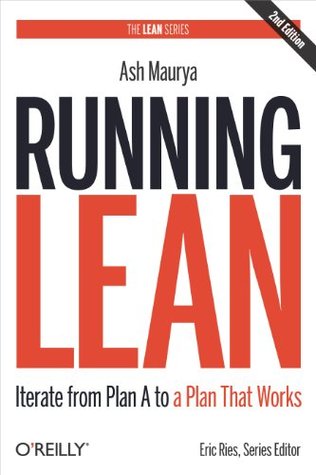More on this book
Community
Kindle Notes & Highlights
by
Ash Maurya
Read between
June 5 - July 10, 2015
Content precedes design. Design in the absence of content is not design, it’s decoration. — Jeffrey Zeldman, A List Apart (Happy Cog Studios)
Even though building a product is the purpose of a startup,
Your MVP should be like a great reduction sauce — concentrated, intense, and flavorful.
The job of your unique value proposition (UVP) is to make a compelling promise. The job of the MVP is to deliver on that promise. The essence of your MVP should be captured in the mock-up of your number-one problem. Start there.
The three A’s of metrics are: Actionable, Accessible, and Auditable.
If you can’t convert a warm prospect in a 20-minute face-to-face interview, it will be much harder to convert a visitor in less than eight seconds on your landing page.
The structure of this interview largely follows a usability testing format described by Steve Krug in his book, Rocket Surgery Made Easy (New Riders Press).
Your first objective during trials is to reduce user abandonment on your acquisition and activation paths. Your next objective is to increase retention and engagement, get paid (if that applies), and collect favorable customer testimonials.
But even better than drip marketing is lifecycle marketing. Lifecycle marketing additionally considers the user’s stage in the customer lifecycle. So, for instance, if a user gets stuck during activation, instead of educating him about your advanced features, you would know to send him timely and appropriate troubleshooting help.
Don’t spend a lot of effort acquiring customers and then just let them walk away.
More features dilute your unique value proposition (UVP).
Simple products are simple to understand.
Put down the compiler until you learn why they’re not buying. — Jason Cohen, A Smart Bear blog
More features mean more tests, more screenshots, more videos, more coordination, more complexity, and more distractions. Start With No. — 37signals, Getting Real
Once you have identified a feature, the first step is to test to see if the problem is worth solving. If you can’t justify building the feature, kill it immediately.
Product/Market fit means being in a good market with a product that can satisfy that market.
In this case, while Sean’s test can help determine if you have early traction, it doesn’t help you achieve it.
Focus on the “Right” Macro Build something people want. — Paul Graham
While revenue is the first form of validation, retention is the ultimate form of validation.
The engine of growth is the mechanism that startups use to achieve sustainable growth. — Eric Ries, The Lean Startup (Crown Business)
Lesson 1: Being different is good only if that difference matters.
Lesson 2: Making money is the first form of validation, but that may not be enough.
Lesson 3: Startups can consume years of your life, so pick a problem worth solving.
A good hack for finding a problem worth solving (codified with the help of Patrick Smith) is immersing yourself completely in a vertical (any vertical) you are passionate about and surrounding yourself with other passionate people. People inevitably have problems, and you (the entrepreneur) are wired to look for solutions.
I believe that the life of any startup can be divided into two parts: before product/market fit (call this “BPMF”) and after product/market fit (“APMF”). — Marc Andreessen,
Every process works well until you add people.
Sell other related stuff along the way. It is very tempting to take on unrelated consulting to survive, but it becomes very hard (if not outright impossible) to build a great product in parallel. Instead, look for other related stuff that you can sell along the way. License a piece of your technology, write a book (like this one), teach workshops, get paid to speak, and so on. Not only are these things related to your core business, but many of them also help you build up your online reputation and brand, which pays off over time and could even lead to an unfair advantage.
The first comes from psychologist Mihály Csíkszentmihályi, who defines flow as a mental state of operation when you are at your best. When you are in flow, you are so totally immersed in an activity that nothing else matters. You lose your self-consciousness and sense of time.
The initial objective of a startup is learning, not optimization.
Your free users are not your customers (yet).
focus all your efforts on building your application, not your infrastructure.
Also note that your key activity for activation may not be the same as your key activity for retention.


